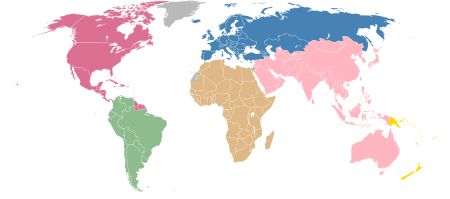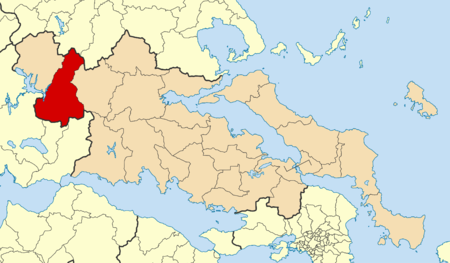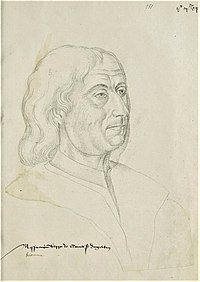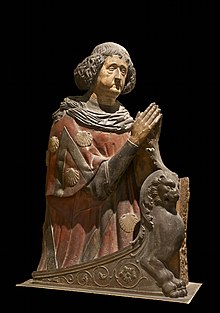Philippe de Commines
| |||||||||||
Read other articles:

У этого термина существуют и другие значения, см. Хозяйка. Хозяйкаукр. Хазяйка Жанр Мелодрама Режиссёр Бата Недич[1] В главных ролях Елена Стефанская, Екатерина Варченко, Марк Дробот, Сергей Радченко, Владимир Горянский Страна Украина Язык Русский Число сезонов 1 �…

American singer and TV personality (1919–1991) Tennessee Ernie FordFord in 1957Background informationBirth nameErnest Jennings FordBorn(1919-02-13)February 13, 1919Fordtown, Tennessee, USDiedOctober 17, 1991(1991-10-17) (aged 72)Reston, Virginia, USGenres Country pop gospel Occupation(s) Musician actor Instrument(s) Vocals acoustic guitar harmonica piano Years active1949–1991LabelsCapitol Records, Word RecordsMusical artist Ernest Jennings Ford (February 13, 1919 – October 17, 1991),&…

Biogeochemical cycle Manganese cycles through the lithosphere, the hydrosphere, and the atmosphere. Arrows show processes and direction of transport.The manganese cycle is the biogeochemical cycle of manganese through the atmosphere, hydrosphere, biosphere and lithosphere. There are bacteria that oxidise manganese to insoluble oxides, and others that reduce it to Mn2+ in order to use it.[1] Manganese is a heavy metal that comprises about 0.1% of the Earth's crust and a necessary element …

American medical comedy-drama television series ScrubsGenre Sitcom Comedy drama Medical drama Created byBill LawrenceStarring Zach Braff Sarah Chalke Donald Faison Neil Flynn Ken Jenkins John C. McGinley Judy Reyes Eliza Coupe Kerry Bishé Michael Mosley Dave Franco Narrated by Zach Braff Kerry Bishé (season 9) Theme music composer Chad Fischer Chris Link Tim Bright Opening theme Superman by Lazlo Bane (seasons 1–8) Superman by WAZ (season 9) ComposerJan StevensCountry of originUnited StatesO…

TurkeyNickname(s)Ay Yıldızlılar (The Crescent-Stars)AssociationTurkish Football FederationConfederationUEFA (Europe)Head coachEmrah Aykurt[1]Most capsErkan Anzaflıoğlu (57)Top scorerBarış Terzioğlu (48)FIFA codeTUR First colours Second colours First international Spain 2–1 Turkey (Rio-de-Janeiro, Brazil; 12 February 2001)Biggest win Turkey 14–0 Malta (Pescara, Italy; 4 September 2015)Biggest defeat Belarus 10–2 Turkey (Baku, Azerbaijan; 5 Ju…

On this ledge are some ring-shaped structures up to 2 metres across. These are moulds of gymnosperms (early coniferous trees) which died after being encased in sediment. Most of the trees were upright leaving round holes, but some had fallen leaving elongate coffin-shaped moulds. The Fossil Forest is the remains of an ancient submerged forest from Jurassic times, located to the east of Lulworth Cove on the Isle of Purbeck in Dorset, England.[1] It lies on the Jurassic Coast, on a wide le…

Gino Capriolo Gino Capriolo (Napoli, 11 ottobre 1905 – Napoli, 29 marzo 1957) è stato un drammaturgo italiano. Indice 1 Biografia 2 Filmografia 2.1 Sceneggiatura 2.2 Soggetto 3 Opere 4 Teatro 5 Televisione 6 Riviste radiofoniche RAI 7 Note 8 Bibliografia 9 Altri progetti 10 Collegamenti esterni Biografia Figlio di Emilia Vaglio (in arte Paola Riccora) e Caro Capriolo, avvocato e autore teatrale, entrambi noti negli ambienti di teatro; nel salotto dei Capriolo convenivano, tra gli altri, Raffa…

Мечислав Щеснякпольск. Mieczysław Szcześniak Основная информация Имя при рождении Mieczysław Szcześniak Дата рождения 9 июля 1964(1964-07-09) (59 лет) Место рождения Калиш, Польша Страна Польша Профессии певец Годы активности 1984—наст. время Жанры поп-музыка, госпел, христианская музык…

1933 play by Cao Yu Thunderstorm (Chinese: 雷雨; pinyin: Léiyǔ; Wade–Giles: Lei-yü) is a play written in 1933 by the Chinese dramatist Cao Yu. It is one of the most popular Chinese dramatic works of the period prior to the Japanese invasion of China in 1937. History The drama Thunderstorm was first published in the literary magazine, Literary Quarterly. Shortly after its publication, a production of the play was mounted in Jinan, and later, in 1935, in Shanghai and in Tokyo, b…

Peteinosaurus Periode Trias Akhir, 221–210 jtyl PreЄ Є O S D C P T J K Pg N TaksonomiKerajaanAnimaliaFilumChordataKelasReptiliaOrdoPterosauriaFamiliDimorphodontidaeGenusPeteinosaurus Wild, 1978 lbs Peteinosaurus (Pelafalan Inggris:/pɛˌtaɪnəˈsɔːrəs/ peh-TY-nə-SOR-əs;[1] berarti kadal bersayap) merupakan genus pterosaurus prasejarah. Pterosaurus ini hidup pada periode Trias Akhir pada Norian akhir (sekitar 221 to 210 juta tahun yang lalu) dan sayapnya sepanjang 60 c…

主要地方道 愛媛県道25号 八幡浜宇和線主要地方道 八幡浜宇和線 路線延長 11.3 km 制定年 1965年 起点 八幡浜市矢野町【北緯33度27分3.1秒 東経132度25分58.7秒 / 北緯33.450861度 東経132.432972度 / 33.450861; 132.432972 (県道25号起点)】 終点 西予市【北緯33度22分37.7秒 東経132度30分14.2秒 / 北緯33.377139度 東経132.503944度 / 33.377139; 132.503944 (県道25�…

Veracruz Winter LeagueCurrent season, competition or edition: 2018-19 Veracruz Winter League seasonSportBaseballFounded2005No. of teams6Country MexicoContinentNorth AmericaMost recentchampion(s)Tobis de Acayucan (2nd title)Most titlesBrujos de Los Tuxtlas (6 titles)QualificationLatin American Series (2013-16) (2019-)Official websitehttp://www.ligainvernalveracruzana.com The Veracruz Winter League (Spanish: Liga Invernal Veracruzana de Béisbol Profesional) is a professional baseball winter …

اضغط هنا للاطلاع على كيفية قراءة التصنيف فصيلة الضفادع الحقيقية ضفدع شائع المرتبة التصنيفية فصيلة[1] التصنيف العلمي النطاق: حقيقيات النوى المملكة: حيوانات الشعبة: حبليات الشعيبة: فقاريات الطائفة: برمائيات الرتبة: بتراوات الرتيبة: ضفادع جديدة الفصيلة العليا: ضفدعيات �…

British statistician (born 1946) Sir Adrian SmithPRS63rd President of the Royal SocietyIncumbentAssumed office 30 November 2020Preceded byVenki Ramakrishnan Personal detailsBornAdrian Frederick Melhuish Smith (1946-09-09) 9 September 1946 (age 77)Dawlish, Devon, EnglandResidenceUKAlma materUniversity of CambridgeUniversity College LondonAwardsGuy Medal (Bronze, 1977) (Silver, 1993) (Gold, 2016)Scientific careerFieldsStatisticsInstitutionsImperial College London Queen Mary, Univ…

Theoretical stance in social science This article needs additional citations for verification. Please help improve this article by adding citations to reliable sources. Unsourced material may be challenged and removed.Find sources: Antipositivism – news · newspapers · books · scholar · JSTOR (November 2021) (Learn how and when to remove this message) Part of a series onResearch Research design Research proposal Research question Writing Argument Referenci…

County in Mississippi, United States County in MississippiTallahatchie CountyCountyTallahatchie County courthouse in SumnerLocation within the U.S. state of MississippiMississippi's location within the U.S.Coordinates: 33°57′N 90°10′W / 33.95°N 90.17°W / 33.95; -90.17Country United StatesState MississippiFoundedDecember 31, 1833Named forChoctaw word roughly meaning “River of rocksSeatCharleston and SumnerLargest cityCharlestonArea • Total65…

Cohort born from 1946 to 1964 Boomer and Baby Boomer redirect here. For the video game, see Baby Boomer (video game). For other uses, see Boomer (disambiguation). Part of a series onSocial generations of the Western world Lost Generation Greatest Generation Silent Generation Baby boomers Generation X Millennials Generation Z Generation Alpha vte Baby boomers, often shortened to boomers, are the demographic cohort following the Silent Generation and preceding Generation X. The generation is often…

Artikel ini tidak memiliki referensi atau sumber tepercaya sehingga isinya tidak bisa dipastikan. Tolong bantu perbaiki artikel ini dengan menambahkan referensi yang layak. Tulisan tanpa sumber dapat dipertanyakan dan dihapus sewaktu-waktu.Cari sumber: American League – berita · surat kabar · buku · cendekiawan · JSTOR American LeagueOlahragaBisbolDidirikan28 Januari 1901; 123 tahun lalu (1901-01-28) di Milwaukee, WisconsinDivisi3Jumlah tim15Negara A…

Former railway station in Cheshire, England BosleyBosley station in 1963General informationLocationBosley, Cheshire, Cheshire EastEnglandGrid referenceSJ913651Platforms2Other informationStatusDisusedHistoryOriginal companyNorth Staffordshire RailwayPost-groupingLondon, Midland and Scottish Railway London Midland Region of British RailwaysKey dates1 September 1849 (1849-09-01)Opened[1]7 November 1960Closed to passengers[1]15 June 1964Closed to freight Bosley railway…

Karpenisi Municipio KarpenisiLocalización de Karpenisi en Grecia Coordenadas 38°54′44″N 21°47′42″E / 38.9121, 21.795Idioma oficial GriegoEntidad Municipio • País Grecia • Periferia Grecia Central • Unidad periférica EuritaniaAltitud • Media 975 m s. n. m.Población (2011) • Total 6655 hab. • Densidad 37 hab./km²Huso horario EET • en verano EESTCódigo postal 36100[1]Prefijo telefó…




